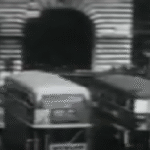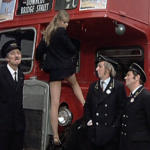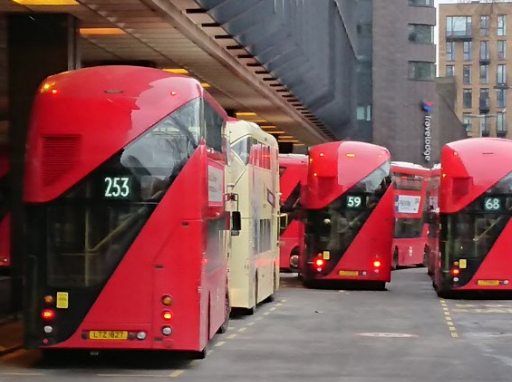On February 8th 1956, passengers boarded what was to become not only a national icon but an internationally recognisable symbol of Englishness along with the ‘Red Telephone Box’, the ‘Red Post Office Box’, the ‘Mini Cooper’, and ‘Big Ben’. That cold and snowy February morning back in 1956, the Route 2 departed from Golders Green to Crystal Palace, transporting its first passengers not only to their destinations but also into the annals of British transport history.
 The Routemaster bus was designed on behalf of London Transport by the designer Douglas Scott and his team including the bus engineer Albert Arthur Durrant between 1947 and 1956. The Routemaster bus was commissioned to replace London’s fleet of ‘Trolley Buses’. Reminiscent of the thinking behind Henry Ford and his ‘Model T’ the Routemaster was designed with the aim of mass production. Not only was it designed to be mass produced but it was also built with the latest automotive technology of the time. Four prototypes of the Routemaster buses were built between 1954 and 1957. Two of them were built at the London Transport works in Chiswick.
The Routemaster bus was designed on behalf of London Transport by the designer Douglas Scott and his team including the bus engineer Albert Arthur Durrant between 1947 and 1956. The Routemaster bus was commissioned to replace London’s fleet of ‘Trolley Buses’. Reminiscent of the thinking behind Henry Ford and his ‘Model T’ the Routemaster was designed with the aim of mass production. Not only was it designed to be mass produced but it was also built with the latest automotive technology of the time. Four prototypes of the Routemaster buses were built between 1954 and 1957. Two of them were built at the London Transport works in Chiswick.
Such was the popularity of the Routemaster bus, that when the film Summer Holiday starring Ciff Richard driving an AEC Regent III RT double-decker bus was released in 1963, the general public referred to the bus as a Routemaster and the belief still prevails to this day.
After the turn of the century, European Union transport regulations on disabled access meant that the old reliable Routemaster buses were no longer allowed to run along the streets of London town. The old red bus was not very accessible for pushchairs and prams and the London mayor at the time, Ken Livingstone, made the decision to bring the long illustrious history of the Routemaster bus to an end.
On Friday 9th December 2005 after a long and productive life lasting nearly fifty years the Routemaster bus number 159,running between Streatham and Marble Arch, made its solemn last journey through the streets of London. just two months shy of its fiftieth birthday, the Routemaster bus was no more. However, buses were allowed to continue running along new heritage routes which were exempt from the new legislation. The heritage routes were the number 9 service running between Kensington High Street and Trafalgar Square and also the number 15 service running between Trafalgar Square and Tower Hill. on 25 July 2014 the route 9 service ended and as of writing the 15 route continues to run and travels from the following locations: Tower Hill station (London Underground), Monument station (London Underground), Cannon Street station (London Underground) (National Rail), Mansion House station (London Underground), St Paul’s Churchyard, City Thameslink station (National Rail), Aldwych, Strand, Charing Cross station (London Underground) (National Rail) and Trafalgar Square
The Routemaster was no more…or was it? In 2007, Boris Johnson the tousled haired MP and candidate for London mayor announced that should the electorate decide that he become mayor of London, he would dispense of the Bendy Bus and return to the capitol’s streets, an old favourite…The Routemaster Bus. Despite being an old favourite, the Routemaster would need a an overhaul, a redesign to meet the challenges of a modern metropolitan city such as London and after Boris’s victory, a competition to design the next Routemaster bus was initiated.
Eventually a company called Wrightbus who are based in Northern Ireland were awarded the contract. It was some time before the design of the new Routemaster was unveiled but in May 2010 everyone got to to see what the long awaited new Routemaster bus would look like. It would be nearly another two years before the new Routemasters would make their first appearances on the streets of London in February 2012 with the first prototype of eight being put into service on the number 38 route. There are now 800 new style Routemaster buses on the streets thanks to Boris Johnson and his ‘Boris Bus’ or ‘Borismaster’.







